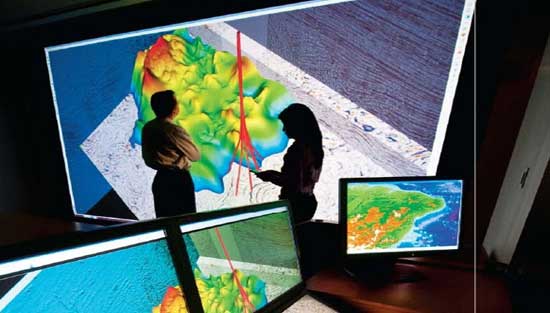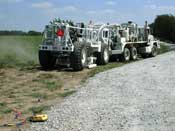TECHNOLOGY section
4. Other New Technologies
H-LA&D new methodologies reduce cost and improve data quality. Periodically technological breakthroughs in a particular segment of the industry seem to come fast and furious despite the industry's reputation for being slow to try new things. Land seismic acquisition could be said to have experienced this type of renaissance in the past few years.
While efficiencies in marine seismic acquisition can be as simple as adding more streamers to the back of a boat, land is a different animal. The conventional procedure for a 3D survey is to lay out a grid of receivers according to a survey design, shake the ground with vibrators or dynamite sources to activate the source, record the resulting seismic waves, then pick up the whole mess and move it to the next location. Noise issues have prevented any type of simultaneous sweeping, and adding to the inefficiency has been the sheer bulk of the cables and geophones, which often need to be deployed in very inhospitable terrain.
But new methods of simultaneous sweeping, new types of vibrator sources, and cableless and passive seismic systems all have played a part in dramatically improving the efficiency of land seismic surveys, even in some very difficult situations.
Computer capability
Another important technology development is the growth of computer processing capability. Until about 2010, the size of a seismic survey was limited by the cost of computer processing capability. But in 2010, the price of computer processing capability reduced to the point that the limiting factor in size and density of seismic surveys was the number of crew you could deploy in the field and the amount of equipment they could carry. It is H-LA&D intention to re-claim the advantage of this computing capability.
©2012 Harrison Lease Acquisition & Development Corp.—All rights reserved

